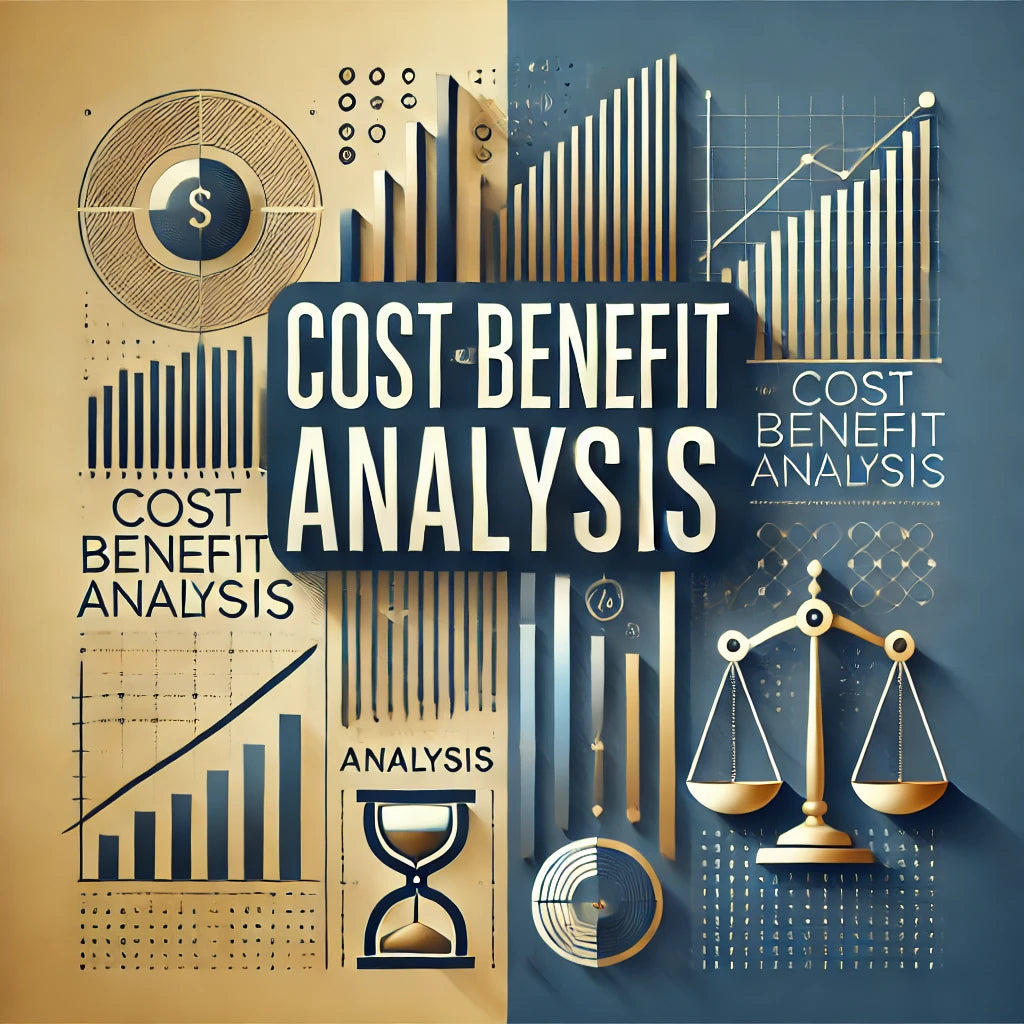Web Strategies
Cost Benefit Analysis
Cost Benefit Analysis
Couldn't load pickup availability
Estimated Reading Time: 3 minutes
In today’s global business climate, every decision affects the trajectory of success. Whether it be purchasing buildings, adding personnel, or expanding a product line, each decision contains an opportunity cost and plays a part in determining your net income (or lack thereof). One of the most necessary tools for business owners and consultants to use when considering a potential opportunity is the cost-benefit analysis. What is cost-benefit analysis? It is a process that involves analyzing decisions by weighing costs against potential profit. This process is utilized across all industries and can be applied by comparing an option’s benefit and costs to reach the best possible decision.
Ultimately, the goal of performing a cost-benefit analysis is to gain the highest net income. Yet remember, the bottom line should always be the bottom line. Calculating the total costs involved with a project, both intangible and tangible, and subtracting them from projected income (or benefits), gives a clear indication of whether the opportunity is viable.
Cost Benefit Analysis Example
How can you perform a cost-benefit analysis? The cost-benefit analysis formula is constructed by simply dividing the cost of the project by the anticipated return on investment. In a perfect world, all projects would have a positive ratio - meaning their revenues are larger than their costs. However, when a project renders a negative ratio, this indicates the project is not worthy of investment. Overall, the goal is to quantitatively (i.e. objectively) compare opportunities and find the best course of action given multiple scenarios.
From a consulting perspective, being able to accurately and effectively run cost-benefit analysis is not only necessary, but expected. Clients rely on consultants to provide accurate and relevant analysis of which course of action to take and provide data-driven feedback on how to optimize a decision-set.
When it comes to capital budgeting conversations, businesses should be most concerned with the long-term effects to the balance sheet. Thus, the cost-benefit analysis tool is helpful when considering a project. Remember, however, that capital budgeting decisions involve the factor of time, which traditional cost/benefit analyses do not account for. If investing in a new building, executives will want to know how long it will take to pay off. To estimate this, one would calculate the Net Present Value (NPV) of the project to calculate the time value of money:

Additionally, you’ll want to calculate payback period. This measures the profitability of the investment and calculates the length of time it would take a project to recover its original costs. Both of these tools are necessary to include when performing capital budgeting analysis. They provide a business with valuable insights on which course of action to pursue
Share


